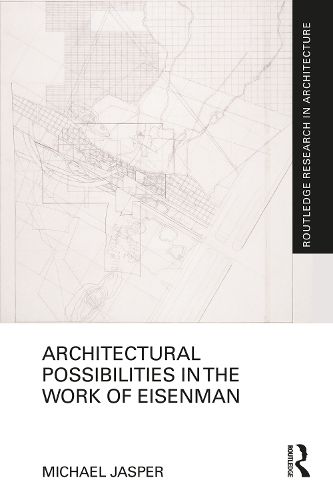Readings Newsletter
Become a Readings Member to make your shopping experience even easier.
Sign in or sign up for free!
You’re not far away from qualifying for FREE standard shipping within Australia
You’ve qualified for FREE standard shipping within Australia
The cart is loading…






This book examines the central decades of Peter Eisenman's work through a formal and thematic analysis of key architectural projects and writings, revealing underlying characteristics and arguing for their productive continuity and transformative role.
The book explores Eisenman's approach to architectural form generation and thinking. It does this through a thematic and formal analysis of projects and writings from the mid-1970s to the mid-1990s. Following an introductory chapter addressing the theme of potentialities, the book is organised in two parts. The first part focuses on key period writings of Eisenman, framing the close reading around a practice of resistance, the architect's approach to history as analysis, and the transformative conceptualisation of time. In the second part, the book undertakes an analysis of select projects from the 1980s and 1990s. Three formal preoccupations and conceptual orientations - ground manipulations, figuration, and spatial events - organise this part of the book. Previously unpublished material from the Peter Eisenman fonds, Canadian Centre for Architecture, Montreal, provides primary source material. A concluding chapter addresses Eisenman's teaching, its relation to his larger project, and possible legacies for educators, practitioners, scholars, and theorists.
$9.00 standard shipping within Australia
FREE standard shipping within Australia for orders over $100.00
Express & International shipping calculated at checkout
This book examines the central decades of Peter Eisenman's work through a formal and thematic analysis of key architectural projects and writings, revealing underlying characteristics and arguing for their productive continuity and transformative role.
The book explores Eisenman's approach to architectural form generation and thinking. It does this through a thematic and formal analysis of projects and writings from the mid-1970s to the mid-1990s. Following an introductory chapter addressing the theme of potentialities, the book is organised in two parts. The first part focuses on key period writings of Eisenman, framing the close reading around a practice of resistance, the architect's approach to history as analysis, and the transformative conceptualisation of time. In the second part, the book undertakes an analysis of select projects from the 1980s and 1990s. Three formal preoccupations and conceptual orientations - ground manipulations, figuration, and spatial events - organise this part of the book. Previously unpublished material from the Peter Eisenman fonds, Canadian Centre for Architecture, Montreal, provides primary source material. A concluding chapter addresses Eisenman's teaching, its relation to his larger project, and possible legacies for educators, practitioners, scholars, and theorists.